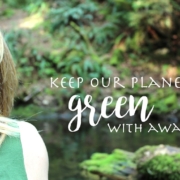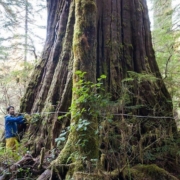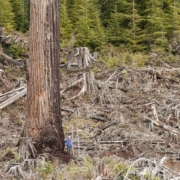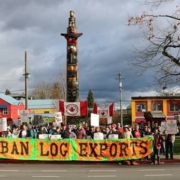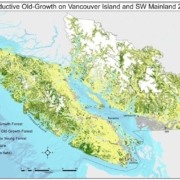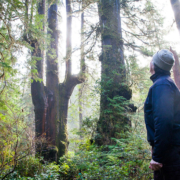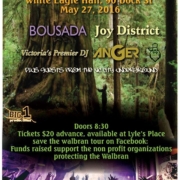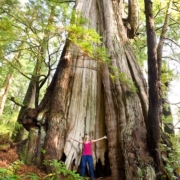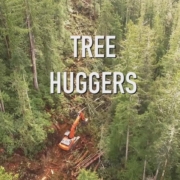Today, May 30, 2016, the BC Chamber of Commerce membership at their Annual General Meeting almost unanimously passed the following resolution calling on the provincial government to expand the protection of old-growth forests across the province where they have or would likely have greater economic value if left standing (this is true throughout most of the southern half of the province…):
PROTECTING OLD GROWTH RAINFORESTS TO THE ECONOMIC BENEFIT OF TOURISM-BASED COMMUNITIES
Opening Statement
Old-growth forests in many parts of the province are important for supporting tourism, recreation, scenery, wildlife, clean water, and wild fisheries, and enhancing nearby property values. Large numbers of tourists from around the world visit the province’s old-growth forests every year.
Perhaps the grandest stand of unprotected old-growth forest in the province is the 500 hectare Central Walbran Valley near Port Renfrew on southern Vancouver Island. Port Renfrew has recently been dubbed as the “Tall Trees Capital of Canada”, and the tourism industry and numerous businesses in Port Renfrew and beyond stand to benefit significantly if the Central Walbran Valley was protected by the province as one of the world’s finest old-growth forest showcases. In many areas of the province, the local economies stand to receive a greater net economic benefit over the foreseeable future by keeping their nearby old-growth forests standing.
Background
Old-growth forests have significant economic, social, and environmental value as tourism resources, wildlife habitat, carbon sinks, clean water sources for fisheries, and are important parts of many First Nations cultures. Old-growth forests today are in scarce supply in much of BC, such as on southern Vancouver Island, where about 90% of the productive old-growth forests have been logged south of Port Alberni. Demand by the tourism industry is high for many remaining old-growth stands.
Port Renfrew has been transformed in recent years into an old-growth forest tourism destination as thousands of visitors are coming from around the world to visit some of the world’s largest trees and grandest groves in places like the Avatar Grove, Central Walbran Valley, Red Creek Fir, Big Lonely Doug, San Juan Spruce, and Harris Creek Spruce. Visitor expenditures by tourists coming to visit old-growth forests near Port Renfrew also generate revenues in other BC communities, including Vancouver, Victoria, Sooke, Lake Cowichan, Duncan, Ladysmith, and Nanaimo. Many tourists fly, boat, or drive into BC from international destinations to see the old-growth forests. The appeal of the tall trees is attracting significant investment into Port Renfrew, including generating a boom in the real estate market as new residents and real estate investors focus their attention on the town with its surrounding natural beauty and enhanced tourism appeal.
Near Port Renfrew on Crown land, the Walbran Valley is 13,000 hectares in extent, of which 5500 hectares lie within the Carmanah-Walbran Provincial Park and the other 7500 hectares lie outside the park. A 500-hectare area, known as the Central Walbran Ancient Forest, is the most intact and recreationally significant portion of the valley and lies outside the park. Thousands of people have visited the Walbran Valley for recreation. The valley lies on Crown land in the traditional territory of the Pacheedaht First Nation band and is currently within existing forestry plans. The most heavily visited areas in the Walbran Valley lie outside of the park in the Central Walbran. This includes the Upper and Lower Castle Grove, Emerald Pool, Fletcher Falls, Summer Crossing, Bridge Camp, Tolkien Giant, Karst Giant, and much more.
Significantly greater numbers of visitors can be expected to visit the region if the area is protected. Across British Columbia, many local communities economically would stand to receive a greater net benefit in revenues and jobs over the ensuing decades from the protection of key old-growth forests in their region.
Perhaps a most vital example of the economic value of protecting the old growth forest can be demonstrated in an anecdote from our Community. Port Renfrew has for many years been known as the location on the south coast of Vancouver Island for excellent sport fishing. Fishermen come from all over North America to fish out of San Juan Bay and out to Swiftsure Banks. However, because of its exposure to the open ocean and limited marina facilities the fishing in Port Renfrew is seasonal and until recently the Community was busy only from May long weekend until mid-September. October to April in Port Renfrew was quiet. The restaurants closed or kept limited hours and people moved away for the winter to find work and other opportunities.
In February of 2012, the Ancient Forest Alliance was successful in rallying the BC government to protect a spectacular ancient forest only a few kilometers from Port Renfrew called Avatar Grove. The designation by the Province gathered much media attention and by summer, visitors were flooding to Port Renfrew to see the massive trees and to hike in the pristine old-growth forest. Since that summer, local accommodation providers in Port Renfrew have reported that demand for accommodations has increased 75% to 100% year over year. What is especially noteworthy is that the off-season activity has steadily increased when sport fishing charters are not operating or operating on a limited schedule. Thanks to the trees, Port Renfrew is no longer a one-industry tourism town and has been able to successfully brand itself the “Tall Tree Capital of Canada”.
In 2012 a kayaking company in Discovery Islands did an illuminating economic analysis. It calculated the economic value of 60 hectares of timber scheduled to be logged above and around the kayaking base camp across from the world-famous Robson Bight. It was determined that the value of the 60 hectares of timber was worth about $3,600,000.00. Since the regeneration cycle meant the area could be cut only once every 60 years, the yearly economic value of the timber was $60,000. The economic value to the kayaking company, however, was $416,000 per year, or $24,960,000 for the same 60-year period. In stark contrast to the approximately 300 person-days employment from logging the 60 hectares just once, the kayaking company provided 20,160 person-days of employment during the 60-year cycle. And this simple economic analysis didn’t include the employment and earnings for the 40 other ecotourism businesses using the same area.
THE CHAMBER RECOMMENDS That the Provincial Government:
1. Support the increased protection of old-growth forests in areas of the province where they have or can likely have a greater net economic value for communities if they are left standing for the next generation and beyond.
2. Protect endangered old-growth forests by enacting new regulations such as an Old-Growth Management Area, Wildlife Habitat Area, or Land Use Order, with the intent to eventually legislate permanent protection for areas through provincial park or conservancies.
Submitted by the Port Renfrew Chamber of Commerce

